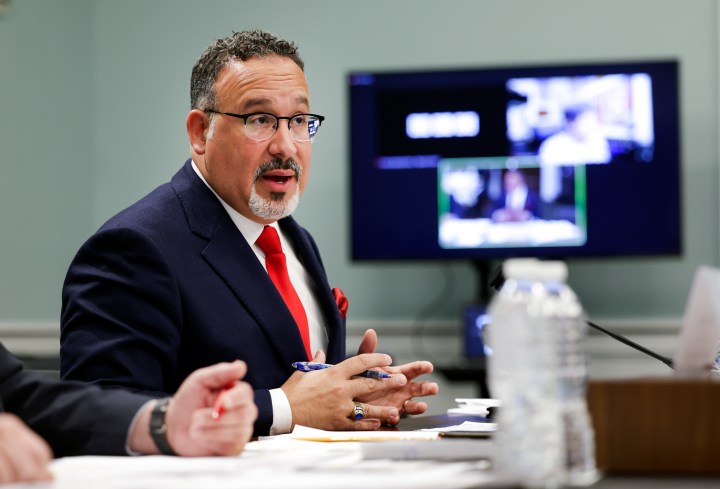
How the Department of Education is recommending higher ed spend money on mental health care
How the Department of Education is recommending higher ed spend money on mental health care

During the pandemic, the federal government provided more than $76 billion to institutions of higher education to keep them — and their students — going through the pandemic. A lot of that money has been accounted for, but there’s a good chunk of it left, a quarter by one estimate, and this morning, the Department of Education is announcing new guidance on how schools can spend the money on mental health care.
Marketplace’s Stephanie Hughes covers education for us and just talked with the Secretary of Education, and we spoke with her. Below is an edited transcript of the conversation.
David Brancaccio: So, what did he tell you?
Stephanie Hughes: In the wake of the pandemic, there’s enormous demand from students for mental health care. And the Department of Education is providing recommendations for how schools can do that. Education Secretary Miguel Cardona gave me some examples of what schools are spending the money on.
Miguel Cardona: We have the Higher Education Emergency Relief Funds being used to have additional counselors on campus, or available to the students, or contracts with health centers or hospitals where students on campus can have access to those counselors paid for by the universities.
Hughes: The Department also said schools can spend money on things like telehealth, including text-based counseling, or suicide prevention training for faculty and students.
Brancaccio: So, a quarter of $76 billion is not nothing. But it’s a one-time thing, and there’s a deadline for schools to spend it. What happens once it’s gone?
Hughes: Yeah. Secretary Cardona says there is an acute need right now, post-pandemic. But he also says colleges should think about how to incorporate mental health services into their budgets in the future.
Cardona: This has to really be baked into how we reimagine our institutions, right? Gone are the days where we’re just focusing on the academic needs of our students … We often talk about traditional and non-traditional students. The reality is that our college students are more non-traditional … we need to make sure that our universities are evolving to meet them where they are, and I’m seeing that.
Hughes: Basically, he’s saying that lots of college students are older, may have kids of their own, may be working other jobs while in school. All of that can cause stress, and it’s the job of these institutions to provide help so the students can learn.
Brancaccio: You also asked Secretary Cardona about another big issue in higher ed, the possible cancellation of student debt, which the Biden administration is considering. What did he tell you?
Hughes: Yeah. He says they’re talking with the White House about that, and the conversations are ongoing. In the meantime, he says the Department is working to fix broken parts of the student loan system. For example, making sure public servants who’ve applied to have their loans forgiven actually get relief. That wasn’t always happening before.
There’s a lot happening in the world. Through it all, Marketplace is here for you.
You rely on Marketplace to break down the world’s events and tell you how it affects you in a fact-based, approachable way. We rely on your financial support to keep making that possible.
Your donation today powers the independent journalism that you rely on. For just $5/month, you can help sustain Marketplace so we can keep reporting on the things that matter to you.











